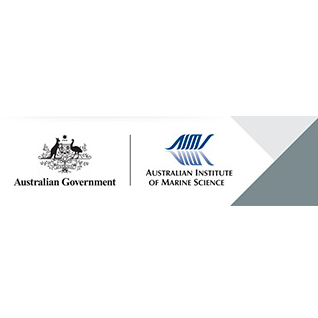Brief description
Baited Remote Underwater Video Stations (BRUVS (TM)) were deployed in August/September 2007 and January 2008 to survey assemblages of fish, sharks, rays and sea snakes at deep water sites (40-60 m) in South Scott Reef lagoon. The survey program was aimed at detecting impacts of the 2007 seismic acquisition (Maxima 3D Marine Seismic Survey or Maxima 3D MSS) conducted by Woodside Energy Ltd., which covered an area of approximately 362 km² of the lagoon.Two series of BRUVS (TM) surveys were conducted. The Maxima Pre-Post Surveys (MPSS) were conducted at 20 sites before and after Maxima 3D MSS. Due to the large extent of Maxima 3D MSS, all regions of South Scott Reef were likely to be affected and it was not possible to find suitable control sites. All sites were located in the area covered by Maxima 3D MSS and the sites were stratified unequally amongst three 'ecoregions' determined to be relatively homogeneous in terms of fish habitats from previous benthic surveys. These ecoregions, dominated by live coral, were classified as: 'Deep-Water Foliaceous Coral'; 'Deep-Water Coral Assemblage'; and the less extensive, 'Deep-Water High Diversity'. Each site was surveyed on four occasions, twice before and twice after Maxima 3D MSS.A second series of surveys (Before-After, Control-Impact (BACI)) were undertaken to overcome the lack of controls in the MPSS. A small-scale seismic test was conducted immediately after the pre-impact phase. The limited extent of the seismic test allowed 4 'impact' sites directly under the test path to be compared to 4 distant sites that acted as 'controls'. These impact and control sites were re-sampled immediately following the seismic test and provided a small-scale BACI study. Conducted before the overall seismic acquisition phase, the surveys took advantage of yet-to-be affected areas of the lagoon as control sites.At each site 4 replicate BRUVS (TM) were deployed, with the aim of recovering at least 3 useful replicates in case of unsuccessful deployments caused by gear toppling on the uneven seabed terrain or through the influence of strong currents. Each BRUVS (TM), was deployed to provide 45 minutes of video imagery at the seafloor. Two fleets of 4 BRUVS (TM) were used to sample two sites simultaneously. The GPS position, echo sounder depth, and date: time of deployment were recorded for each deployment.The process of reading BRUVS (TM) tapes involved reviewing each tape in detail with the assistance of a shuttle control that enabled the footage to be frozen, reversed, or advanced frame by frame when necessary. The parameters recorded during the process were:- classification of the habitat (a still image was grabbed for each set)- identification to species level of all vertebrates observed (following the CAABCodes Australian standard naming convention)- the relative abundance of each species (recorded as 'MaxN' - the maximum number visible at one time at any point on the tape)- the 'time of arrival' (Tarr) of each fish species- the behaviour of each species (classified into 8 categories)- the life stage of each species (adult or juvenile)- the time elapsed before MaxN (TmaxN) and feeding (Tf) was observed for each species- a still image of each species on every tape was grabbed for future reference and for quality assurance in identification- the name of the tape reader was recorded for quality assurance purposesSurveys were undertaken to characterise any changes to the levels of fish diversity and abundance resulting from the Maxima 3D Marine Seismic Survey of South Scott Reef lagoon.
These surveys were designed to address Objective 5 (Fish Diversity and Abundance), which was a component of the Fish Monitoring Program associated with Maxima 3D Marine Seismic Surveys in South Scott Reef lagoon.
Lineage
Maintenance and Update Frequency: notPlannedModified: 13 03 2024
text: westlimit=121.81408; southlimit=-14.13978; eastlimit=121.93953; northlimit=-14.04852
Analysis of Baited Remote Underwater Video Stations (BRUVS). Maxima 3D Seismic Surveys at Scott Reef. Fish Monitoring Program. Objective 5 - Fish Diversity and Abundance: Cappo MC, De'ath AG, Stowar MJ, Johansson C, Ericson GB and Depczynski M (2008) Analysis of Baited Remote Underwater Video Stations (BRUVS). Maxima 3D Seismic Surveys at Scott Reef. Fish Monitoring Program. Objective 5 - Fish Diversity and Abundance. Australian Institute of Marine Science and Environmental Resources Management Australia. 29 p.
local : articleId=8133
- global : 05966112-387a-4bdb-b27b-882ac1c2fe72
- URI : eatlas.org.au/data/uuid/05966112-387a-4bdb-b27b-882ac1c2fe72



